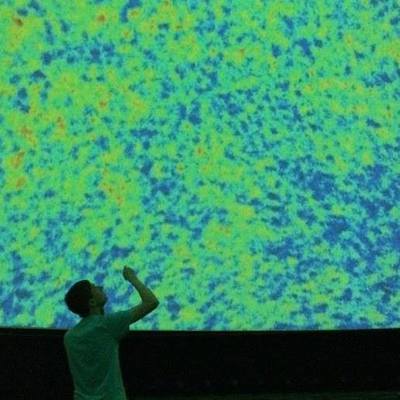I am a research scientist at the Harvard-Smithsonian Center for Astrophysics. My work focuses on the polarization of the Cosmic Microwave Background (CMB), particularly the search for inflation via B-mode polarization at large angular scales. To pursue this research, my collaborators and I build and operate sensitive microwave telescopes and carefully analyze the data produced to detect incredibly faint signals. I am working with Professor John Kovac on the BICEP2/Keck Array/BICEP3 program of CMB polarimeters, which have been leading the field from the South Pole dating back to 2006. As a graduate student, I worked on CAPMAP (Holmdel NJ, 2002–2005) and QUIET (Atacama desert, 2008–2010).

My specific contributions to BICEP2 and Keck Array are focused in two key areas: instrument characterization/calibration and statistical methods for CMB power spectra and foreground component separation. In instrument characterization, my current effort is towards absolute polarization angle calibration for BICEP2, Keck Array, and BICEP3. The component separation likelihood framework that I developed along with students at Harvard produced the results published in the BICEP2/Keck joint analysis with Planck. Other scientific topics that I find fascinating include 21cm radio observations, pulsar timing arrays for detection of gravitational waves, and instrumentation for submillimeter interferometers.
My non-science interests include cooking, running, ultimate frisbee, and the Oakland Athletics. I have been lucky to travel to some exotic locations (The South Pole! Atacama desert!) in the course of my research and I’m always happy to share my perspective on observational cosmology, Antarctica, and the experimental process.
My papers on arXiv // ADS // Google scholar
Contact me via email: cbischoff [at] cfa [dot] harvard [dot] edu
News
- Keck Array/BICEP2 VII: Matrix Based E/B Separation Applied to BICEP2 and the Keck Array. Check out this extremely detailed description of the E/B separation used in the BICEP-Keck analysis. The observation matrix incorporates but the sky coverage and all timestream filtering of the data that are incorporated in our maps. This allows us to solve for the part of the map that is unambiguously due to B-mode polarization, with negligible leakage. (April 5 2015)
- Keck Array/BICEP2 VI: Improved Constraints On Cosmology and Foregrounds When Adding 95 GHz Data From Keck Array. Our new paper is out today on the arXiv including 2014 data from the Keck Array. This is our first results paper to include 95 GHz Keck data and the marks the first time ever that the upper limit on r from B modes is tighter than the (saturated) constraint from the TT spectrum! (November 2 2015)
Press
- Nature News: Gravitational-wave hunt enters the next phase, February 2 2015
- Smithsonian’s Stars Lecture at the Smithsonian National Air and Space Museum, January 24 2015
- Reddit AMA on BICEP2 results from March 20 2014
- Newspaper article from the Malden Observer: South Pole stories at the Malden Public Library, July 29 2011